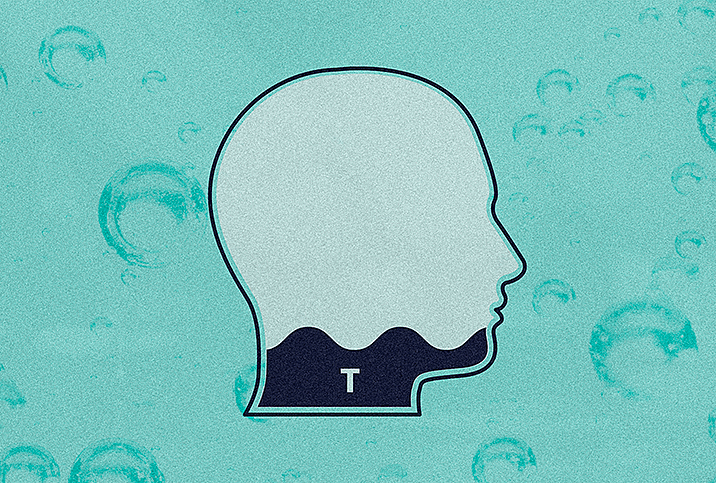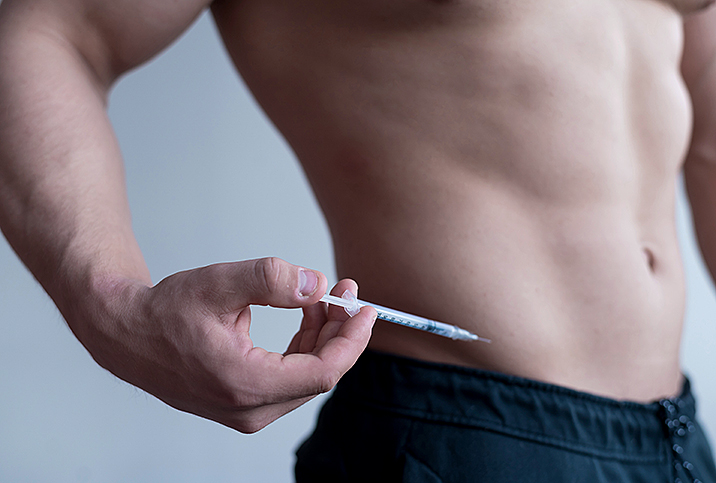Men Can Overcome Low Testosterone

While almost half of the men who have low testosterone are asymptomatic, the rest have a less-than-pleasant experience. Many men with low-T can’t get through the day without feeling exhausted, and they can’t recall the last time they even tried to have sex with their spouse—let alone had a fulfilling experience. On top of those burdens, they walk around as if they’re in a funk all day, every day.
In some instances, low testosterone can make a man feel robbed of his very essence: He loses strength, gains fat and becomes more irritable. After a few years, depression and anxiety can gradually creep in, robbing him of all motivation.
As unpleasant as this scenario sounds, there is hope for men who want to avoid low testosterone levels.
Low-T treatment options
Testosterone replacement therapy is often used to help boost levels of this critical hormone. Five methods are used to administer testosterone—the first three are common and the last two are rarely used.
Injections
Testosterone injection takes one of two forms. Fast-acting injections are typically administered every week or two. Longer-acting injections, in the form of pellets (discussed in more detail below), usually take place every two or three months.
Topical administration
A patient can take testosterone topically through a liquid, patch, cream or gel. In most cases, the area where the medication is administered needs to be covered with a dressing, which allows the skin to absorb the medicine faster. Many patients prefer using a patch, which is similar to a bandage and less likely than a cream, liquid or gel to be transferred to another person.
Pellets
This form of medication is administered through an incision in the skin. In most instances, a doctor will insert pellets under the skin near the upper hip or in the buttocks. First, the patient receives a shot of numbing anesthesia. The doctor then makes a small incision and places the pellets directly inside the tissue. Over the next three to six months, the pellets will slowly dissolve and release the medication.
Nasal
A gel is administered into each nostril three times a day, in a manner similar to nasal spray.
Oral administration
Oral testosterone typically comes in the form of a patch. The patient places it on the roof of his mouth, and the patch slowly releases medication over the next 12 hours.
Risks and benefits
The effectiveness of testosterone therapy, regardless of the form, remains open to discussion in the medical community. Treatments may be effective, but they may lead to side effects that can be serious.
Some patients report a regained sense of vigor and renewed energy. Medical evidence is lacking, however, as to whether therapy actually helps men with low testosterone who are otherwise healthy. Treatment may slightly improve sexual functioning, but there are no real indications that it helps in other areas.
It should be noted that certain risks are associated with testosterone therapy. Skin reactions, enlarged breasts, sleep apnea, an increased risk of blood clots, a reduction in testicle size and potential infertility are among the most common.
Exogenous testosterone decreases the natural production of testosterone—that’s why the testes shrink—and suppresses spermatogenesis (the making of sperm). This does not provide an effective method of birth control, but a couple trying to conceive might have a more difficult time when the man is undergoing testosterone replacement.
Doctors typically take at least two testosterone readings before determining whether or not a patient will benefit from therapy. In many cases, low testosterone does not lead to any negative side effects and can be easily tolerated without the need for any type of medication.
















